
Art Nouveau in Cantabria
Over the years, we have made many journeys through our Infinite Cantabria. This blog is all about its landscapes, customs and people.
Over the years, we have made many journeys through our Infinite Cantabria. This blog is all about its landscapes, customs and people. Today we will talk about an architectural trend that originated in Barcelona, but has some of its most important representations in Cantabria. We will explore the traces of Art Nouveau in our region, with three main protagonists: Comillas, Laredo and Santander.
Art Nouveau is an art movement of the late 19th and early 20th centuries. It is characterised by creative renovation and the importance of decoration and aesthetics inspired by nature. This trend, which quickly spread throughout Europe, arrived in Cantabria thanks to the Marquis of Comillas. After returning from America and settling in Barcelona, he commissioned Catalan architects of the time to construct some of Comillas’ most iconic buildings. It is such an important phenomenon that there is even an Art Nouveau route through the town.

Comillas is the most outstanding representative of this school in our region, with eleven Art Nouveau works: Gaudí’s El Capricho, the Palace of Sobrellano, the Tres Caños fountain, the cemetery with the exterminating angel at the top, the “Puerta de los pajaritos” (Gate of the Birds) or Moro Gate, the gate of the Pontificia, the Antonio López monument itself, the Marquis of Comillas, the Coteruca and the hospital.

Some of them are very well known. Many of you will have visited Gaudi’s Capricho, a summer residence which the brother-in-law of the Marquis of Comillas, commissioned from the Catalan architect, or the Palacio de Sobrellano, the imposing building next to El Capricho with its adjacent Pantheon Chapel, also designed by Gaudi. Or, on your walk through the city, you may have visited the statue of the Marquis —from where you can enjoy a magnificent view out to sea— or strolled by the Tres Caños fountain, or entered the main gate of the Pontifical University and walked through the door, looking at the ceramics with metallic reflections and the carved stone on the coat of arms, where the tiara and the crossed keys appear next to the Jesuit monogram. And what about Comillas cemetery, the work of Luis Doménech y Montaner? This architect reformed the cemetery by integrating the ruins of the old Gothic chapel into its structure and designing a new enclosing wall full of picturesque elements that, together with the sculpture of the Guardian Angel by Jose Llimona, make it one of the most visited cemeteries in Spain.
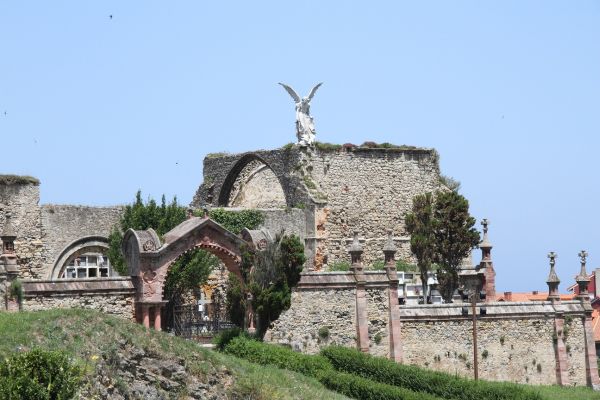
But as we have already said, this is only one of the many Art Nouveau works in Comillas. There are three in particular which are less well known but are included in this route.
The first is known as the Moro Gate or Gate of the Birds. Gaudí sketched this entrance to a private estate on a beach near Barcelona while walking with the estate owner, who had Cantabrian ancestors but lived in Catalonia. The term Moro Gate is used because of the surname of the family that currently owns the property. However, its real name is the Gate of the Birds, because it has a hole in the wall at the top right, so that birds can pass through there, while cars and pedestrians pass through the main gate.
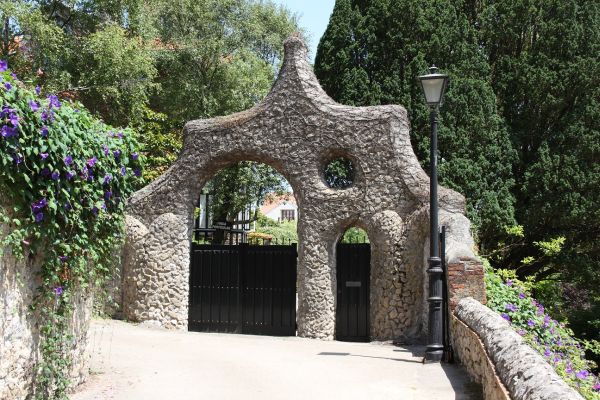
The second is La Coteruca. This house/castle, located at the top of Comillas and offering unbeatable views of the whole town and the coast, used to be a summer residence. During the Civil War it was almost completely destroyed, and only the square towers and the boundary walls were left standing. In 1990, the building was converted into flats and remains so today.
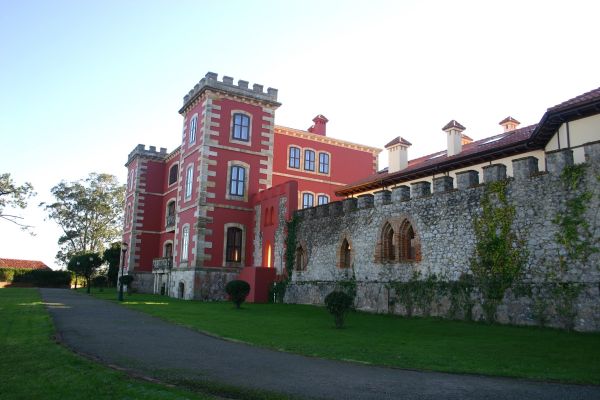
Our third stop is at the hospital, which is now used as a home for the elderly. Despite the many changes it has undergone, the original style in which it was built in 1885 has been preserved. It is located in the upper part of the town, just behind the Plaza del Corro de Comillas, and is worth a visit, at least from the outside.

However, Comillas is not the only place in Cantabria with Art Nouveau buildings. It is where most of them are found, but there are others. Two of Santander’s most famous buildings clearly bear the signature of this artistic movement: the Mercado de la Esperanza and the Gran Casino del Sardinero.
The Mercado de la Esperanza, declared a Historic-Artistic Monument, is one of the great and rare examples of nineteenth-century iron architecture preserved in Spain. The building, which is located in the city centre next to the Town Hall and contains many Art Nouveau traces, is today the Cantabrian capital’s most important food market. But it is not the only Art Nouveau market building in Cantabria, as the Mercado de Abastos in Laredo (see below) also falls under this category.
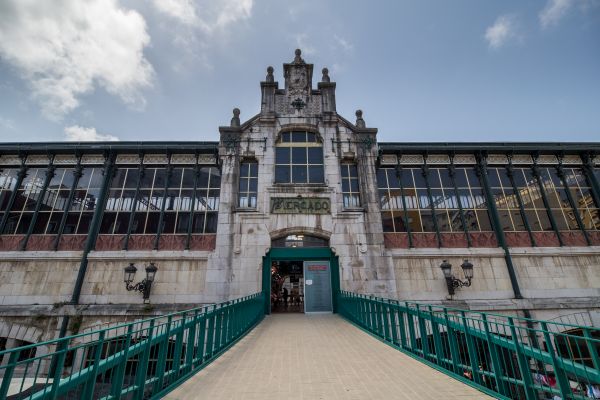
The last Art Nouveau building you should visit in Santander is the Gran Casino del Sardinero. Located on El Sardinero beach, it is one of the city’s most iconic buildings, as it hides a fascinating history behind its walls and has a unique architectural beauty. It was built in 1913 and was the grand casino of a busy resort at the beginning of the 20th century.

We end this post with our last Art Nouveau building, the Mercado de Abastos de Laredo. Popularly known as “Fish Square”, it was built in the early years of the 20th century and has a distinctly eclectic character. It is distinguished by its glazed ceramic embellishments, which conceal its metal structure. The motifs drawn on the ceramics —animal heads, fish, fruit and vegetables— clearly indicate the building’s purpose. Today, it mainly sells fish, meat, fruit and vegetables.
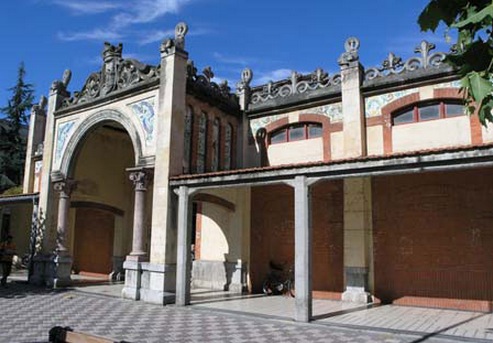
As you can see, modernism has left important traces in our region. Would you like to visit it? If so, share your experiences with us on our social media profiles on Facebook, Twitter and Instagram with the hastag #ComparteCantabria.
Come and enjoy yourself in Cantabria, more to discover.
02/03/2021






